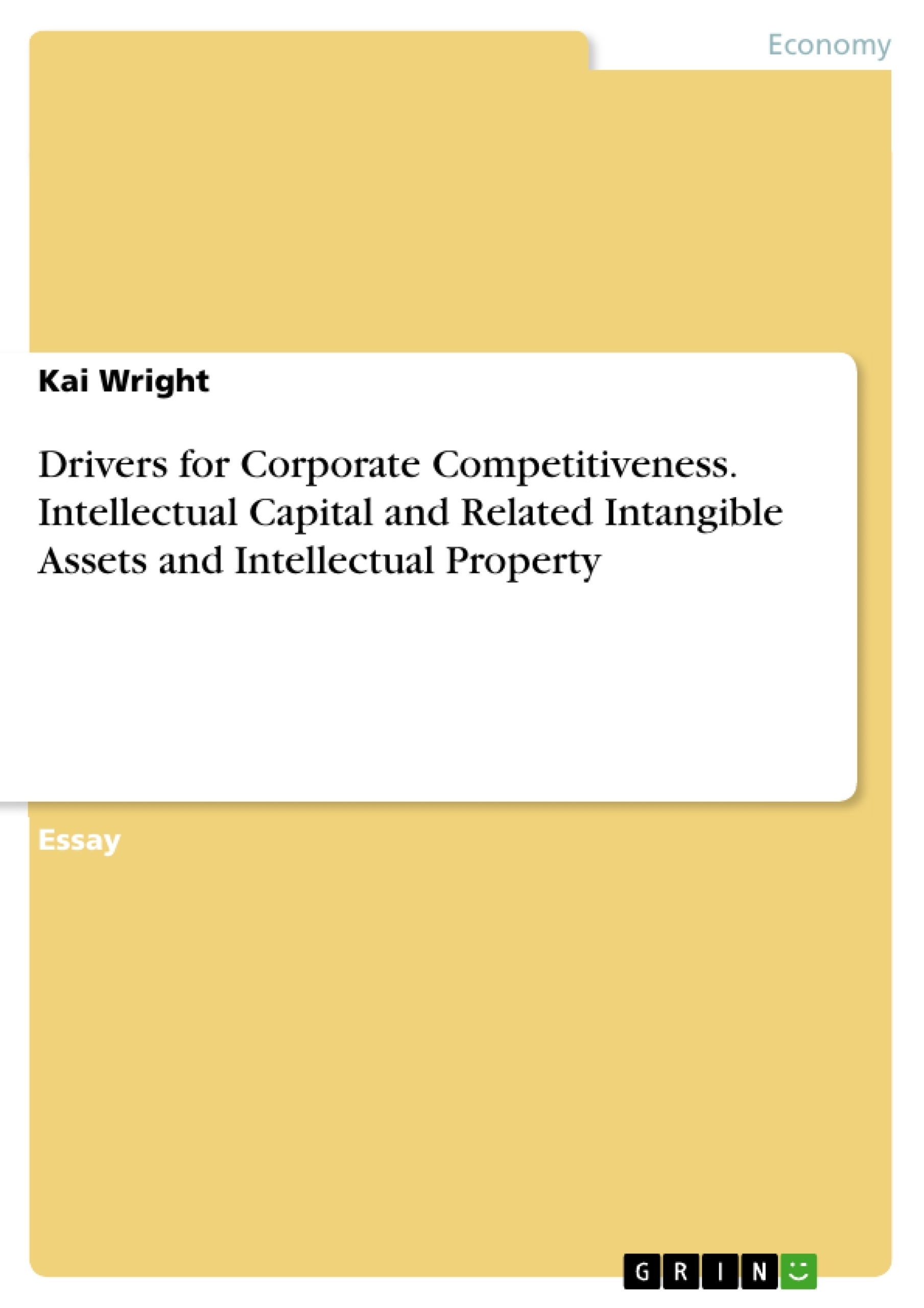Knowledge and competence of individuals and their recognized value for successful and sustainable economic activity is reflected in the term of intellectual capital. Companies that want to be successful and play an outstanding role in the fierce competition of global dynamic markets have to be able to continuously innovate. Competiveness more and more becomes a question of the ability to innovate; Creativeness, ideas, knowledge and competencies as well as the ability to collaborate are key factors to be competitive and therefore are important elements which have to be managed by today’s corporations. One can speak of a paradigm change going away from an industrial society where classical production factors (land, labour and capital) and tangible resources mattered, where labour was seen as a cost factor. The intangible paradigm on the contrary considers labour and therefore humans and their knowledge as the most important source of innovation and value creation. In that sense intellectual capital is actually substituting the other factors of production. This essay will elaborate what intellectual capital is, what elements it consist of and why it is important for corporate competiveness.
Inhaltsverzeichnis (Table of Contents)
- Intellectual capital and related intangible assets and intellectual property
- The emergence and the components of intellectual capital
- A theoretical framework for assessing specific intangible sources
- Empirical examples of acquiring intangible assets
Zielsetzung und Themenschwerpunkte (Objectives and Key Themes)
This essay aims to elaborate on the concept of intellectual capital, its components, and its significance for corporate competitiveness. It explores the evolution of intellectual capital from a traditional focus on tangible assets to a contemporary understanding of intangible resources as drivers of innovation and value creation.
- The importance of intangible assets for corporate competitiveness
- The components of intellectual capital: human capital, structural capital, and relational capital
- The role of intellectual capital in fostering innovation and achieving competitive advantage
- The impact of knowledge workers on the competitiveness of knowledge-intensive firms
- The challenges and opportunities of managing intellectual capital in the digital economy
Zusammenfassung der Kapitel (Chapter Summaries)
- Intellectual capital and related intangible assets and intellectual property: This chapter introduces the concept of intellectual capital and its significance in the context of corporate competitiveness. It discusses the shift from a focus on tangible assets to the recognition of intangible resources as key drivers of innovation and value creation. The chapter also examines the role of intellectual property in securing competitive advantage.
- The emergence and the components of intellectual capital: This chapter explores the three main categories of intellectual capital: human capital, structural capital, and relational capital. It delves into the characteristics of each category and provides examples of how they contribute to corporate success.
- A theoretical framework for assessing specific intangible sources: This chapter presents a comprehensive framework for assessing intangible sources of competitive advantage. It identifies seven key intangible sources and discusses their relevance in the digital economy.
- Empirical examples of acquiring intangible assets: This chapter provides empirical examples of how companies acquire intangible assets, particularly human capital, to maintain competitiveness. It discusses the phenomenon of "acqui-hiring," where companies acquire other companies primarily for their talent and expertise.
Schlüsselwörter (Keywords)
Intellectual capital, intangible assets, corporate competitiveness, human capital, structural capital, relational capital, innovation, knowledge workers, digital economy, acqui-hiring, competitive advantage.
- Arbeit zitieren
- Kai Wright (Autor:in), 2014, Drivers for Corporate Competitiveness. Intellectual Capital and Related Intangible Assets and Intellectual Property, München, GRIN Verlag, https://www.grin.com/document/295656



